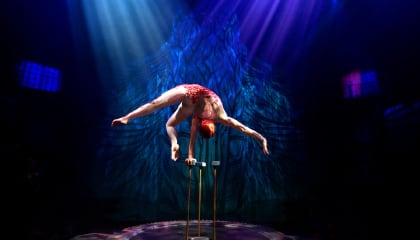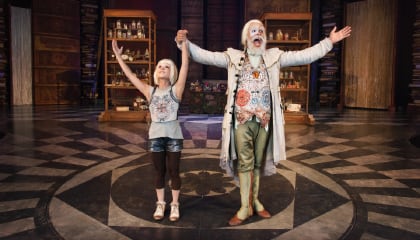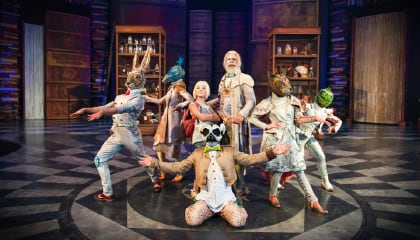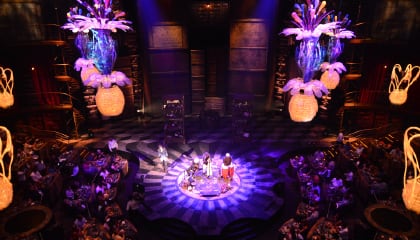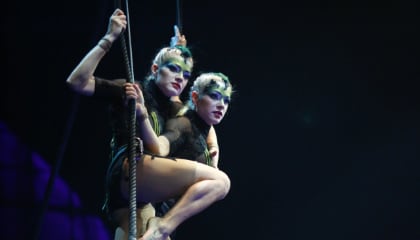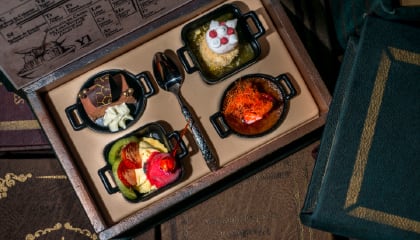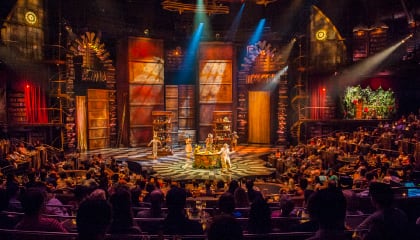JOYÀ
An engaging, immersive, multisensory experience in which joy, courage and friendship conquer all!
Behind the veil of the lush Mayan jungle exists a world of crystal-clear water pools, coral rocks, and rich flora and fauna – an oasis within an oasis. A wooden walkway leads to a theater perched above a massive lagoon cascading in a majestic waterfall. This is the world of JOYÀ – a unique entertainment and culinary experience by Cirque du Soleil.
Inspired by the fabulous migratory journey of the monarch butterfly in which life is passed from one generation to the next to ensure the survival of the species, JOYÀ follows the adventures of a rebellious teenage girl whisked away to a mysterious jungle in her grandfather’s fantastical world. Surrounded by a strange band of half-human, half-animal masters inspired by ancient Mayan iconography, the aging naturalist yearns to pass on to his granddaughter his relentless quest for the meaning of life.
Inhabited by entrancing characters that work hand in hand to perpetuate the love of life, JOYÀ abounds in subtle allusions to the history and culture of Mexico, from the migration of the monarch butterflies, to the asteroid believed to have caused the extinction of the dinosaurs, to artists such as Diego Rivera and Frida Kahlo, and with mariachis, masked wrestlers, pirate legends, and the rhythms and sounds of Mexico.
